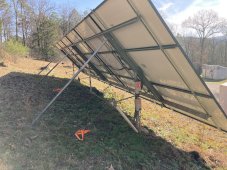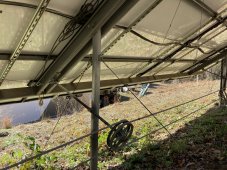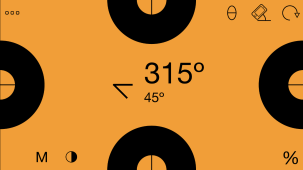missingegg
New Member
- Joined
- Nov 6, 2022
- Messages
- 26
Hi!
I've gotten a great deal on 8 LG NeON R 435W panels, and I'm now thinking about racking for them. These panels are 41"x75.2" (1042x1910 mm), and they weigh 45.2 lbs each (20.5 kg). I'd like to mount them in sets of two panels stacked landscape with a shared long side, on racking that's manually adjustable for tilt. I figure the weight of two panels (~90lbs) is manageable for me if I'm only lifting one side of the two panel set (I'm an old fart, no critiquing my muscle tone). And the landscape orientation implies two rails, going from low to high, and across the two landscape panels. I don't want to invest in a motor assisted tilting mechanism. I also don't think I need the efficiency gain of a motorized tracking system, a few adjustments a year should be fine for me.
I'm comfortable engineering my own DIY system and giving a few $$$ to a fabricator, but I'd happily pay for racking that would meet my needs. Is anyone aware of off-the-shelf racking designed for manually adjusted tilts with panels of this size? Google searches turn up racking at the low end, for single smaller panels, and the higher end with motors, but I'm not finding anything in the middle.
I've gotten a great deal on 8 LG NeON R 435W panels, and I'm now thinking about racking for them. These panels are 41"x75.2" (1042x1910 mm), and they weigh 45.2 lbs each (20.5 kg). I'd like to mount them in sets of two panels stacked landscape with a shared long side, on racking that's manually adjustable for tilt. I figure the weight of two panels (~90lbs) is manageable for me if I'm only lifting one side of the two panel set (I'm an old fart, no critiquing my muscle tone). And the landscape orientation implies two rails, going from low to high, and across the two landscape panels. I don't want to invest in a motor assisted tilting mechanism. I also don't think I need the efficiency gain of a motorized tracking system, a few adjustments a year should be fine for me.
I'm comfortable engineering my own DIY system and giving a few $$$ to a fabricator, but I'd happily pay for racking that would meet my needs. Is anyone aware of off-the-shelf racking designed for manually adjusted tilts with panels of this size? Google searches turn up racking at the low end, for single smaller panels, and the higher end with motors, but I'm not finding anything in the middle.








